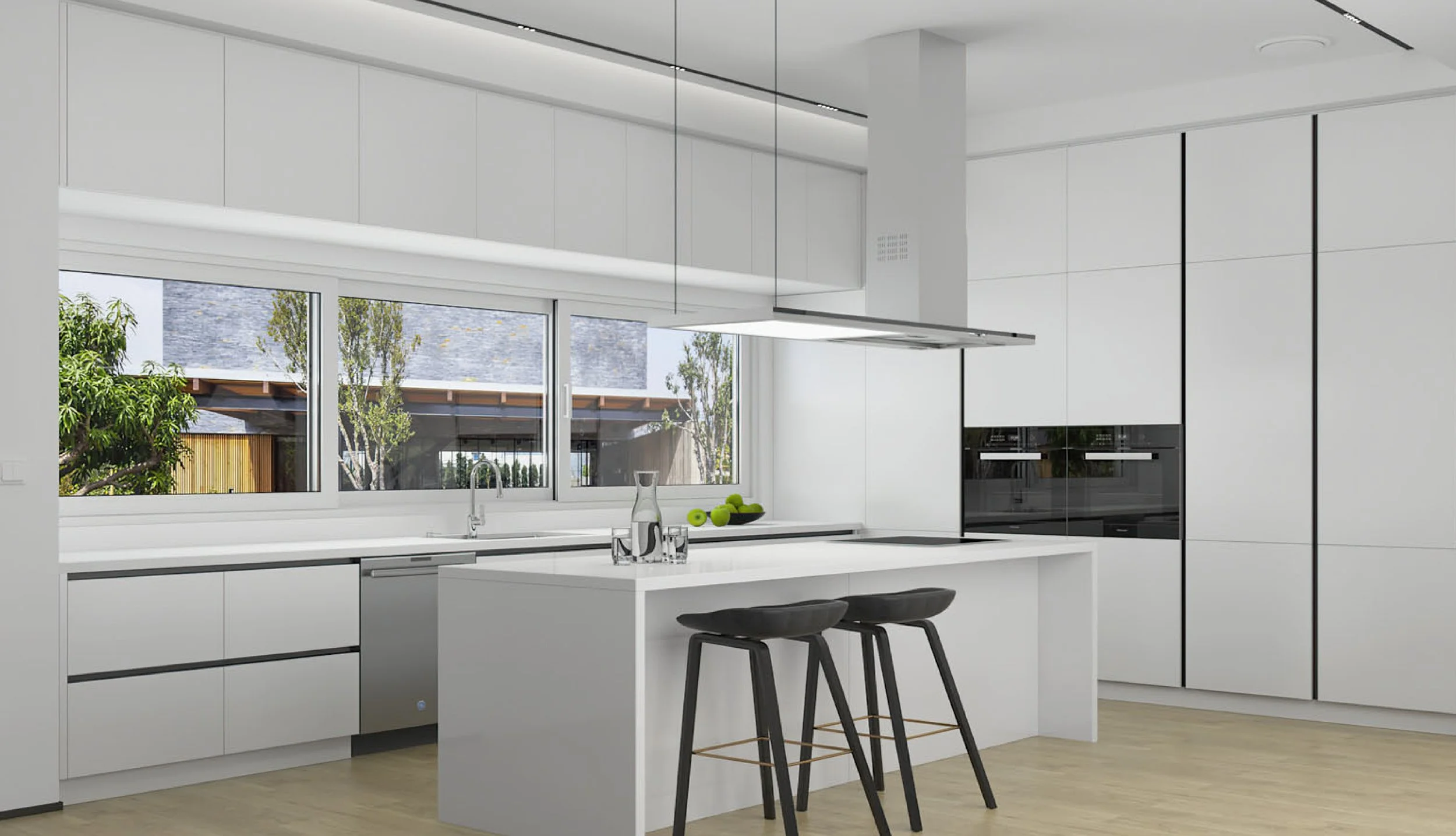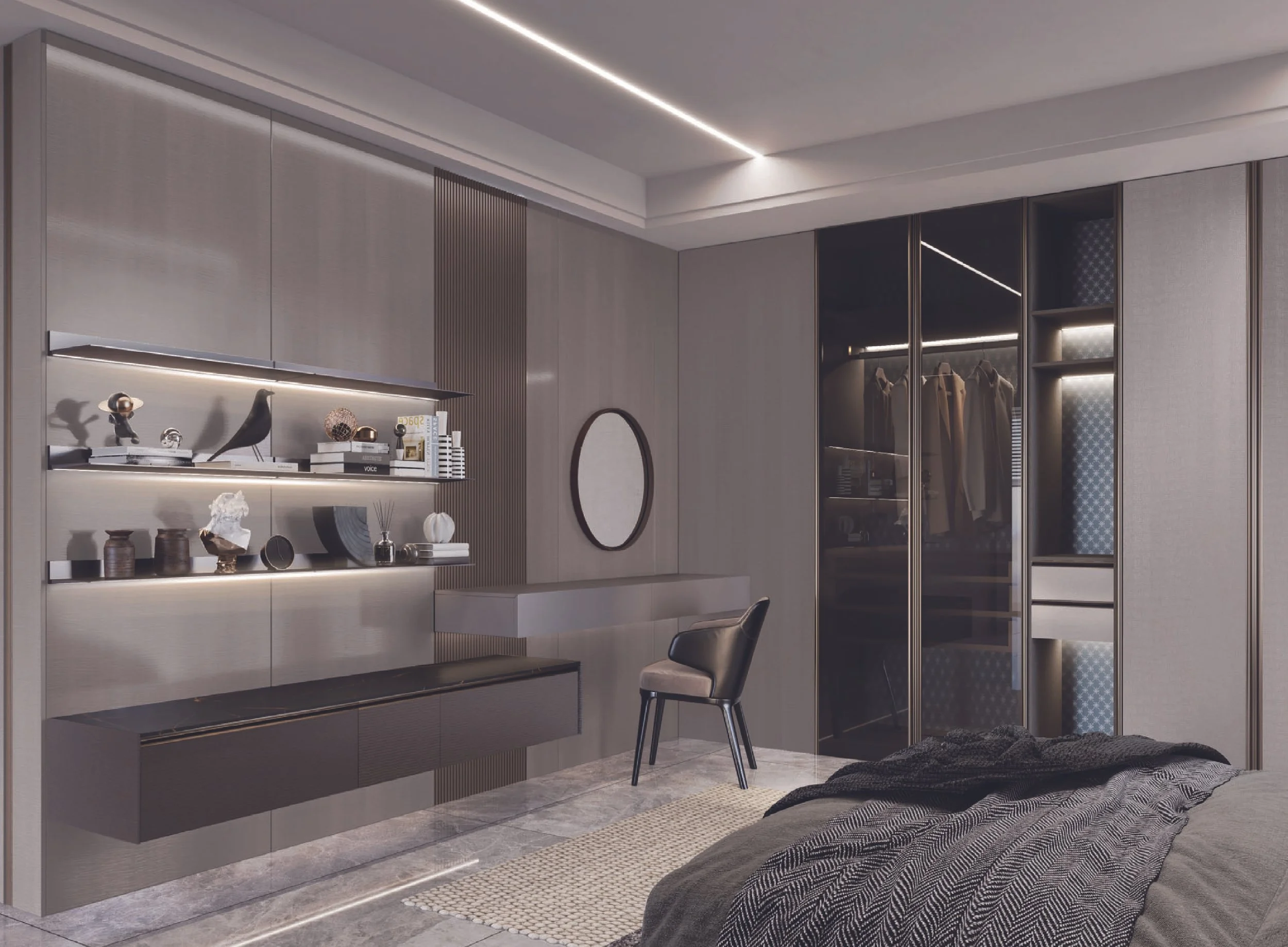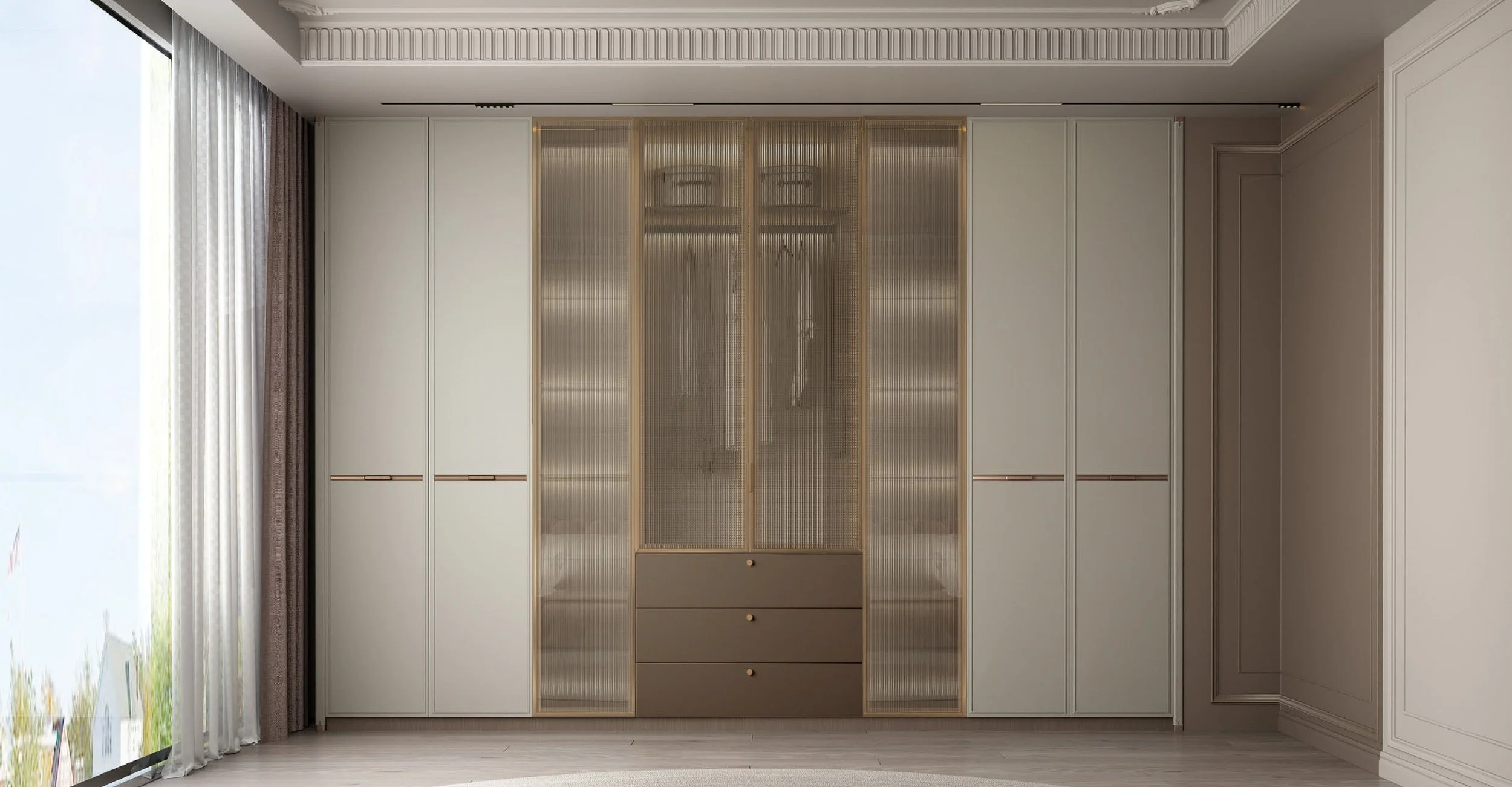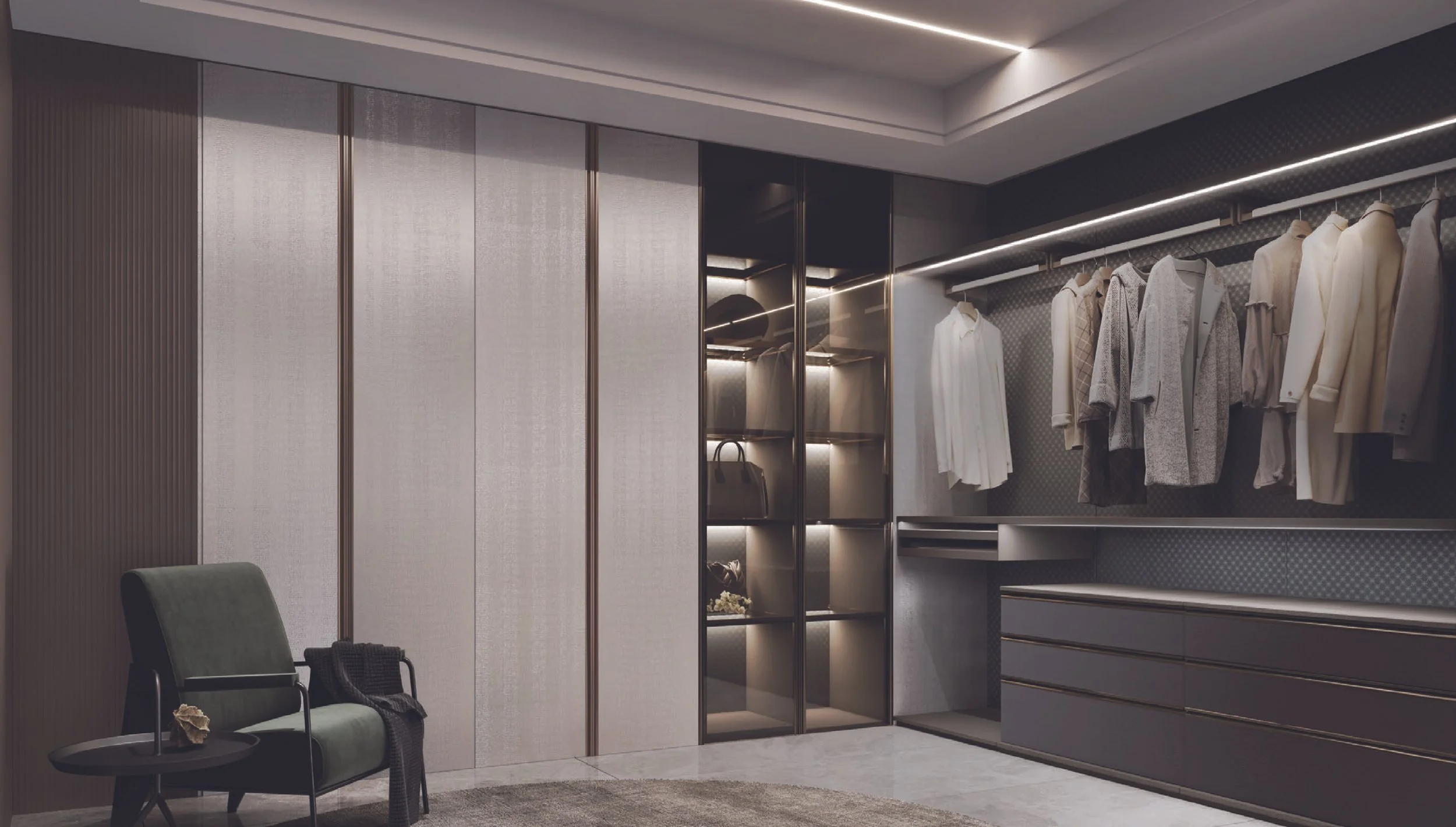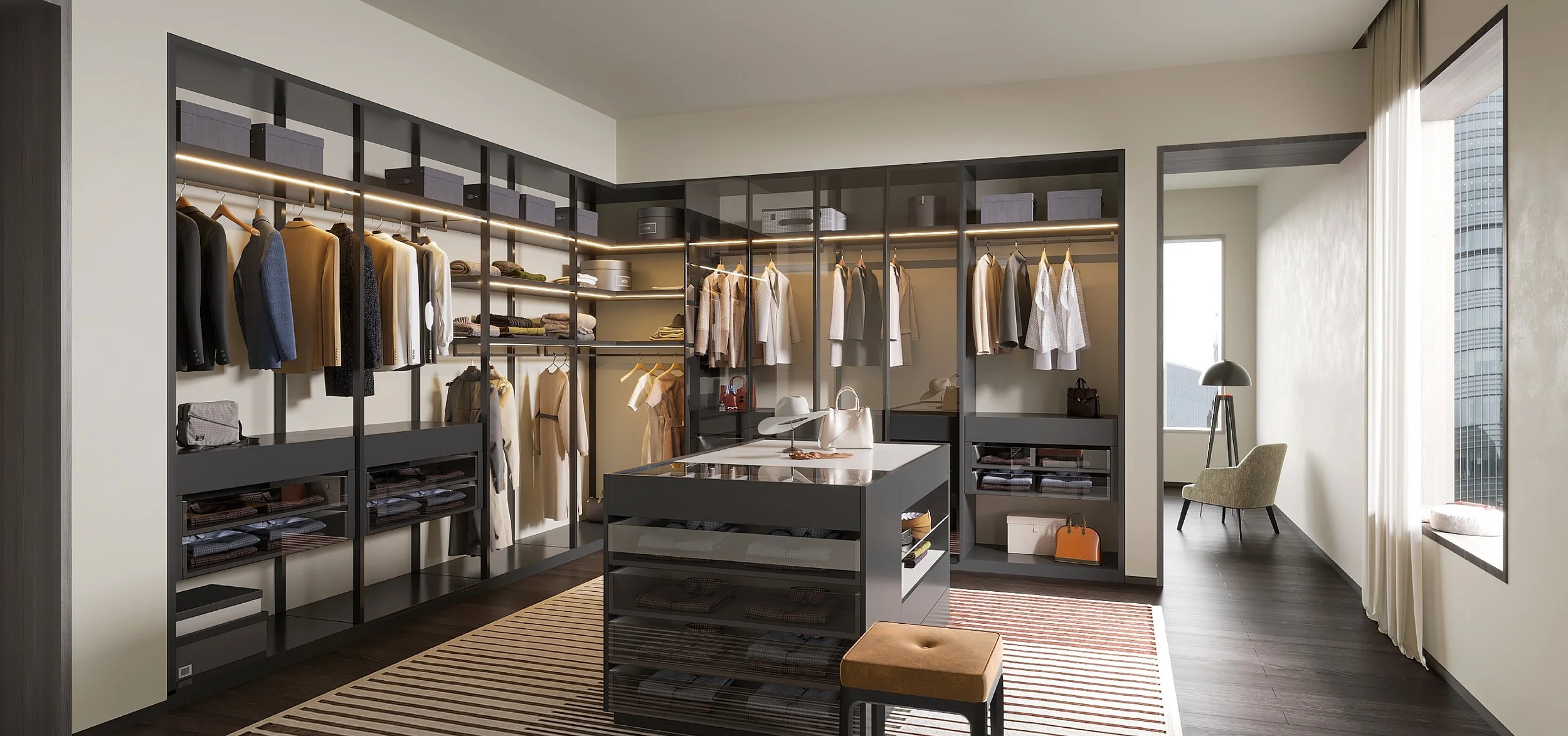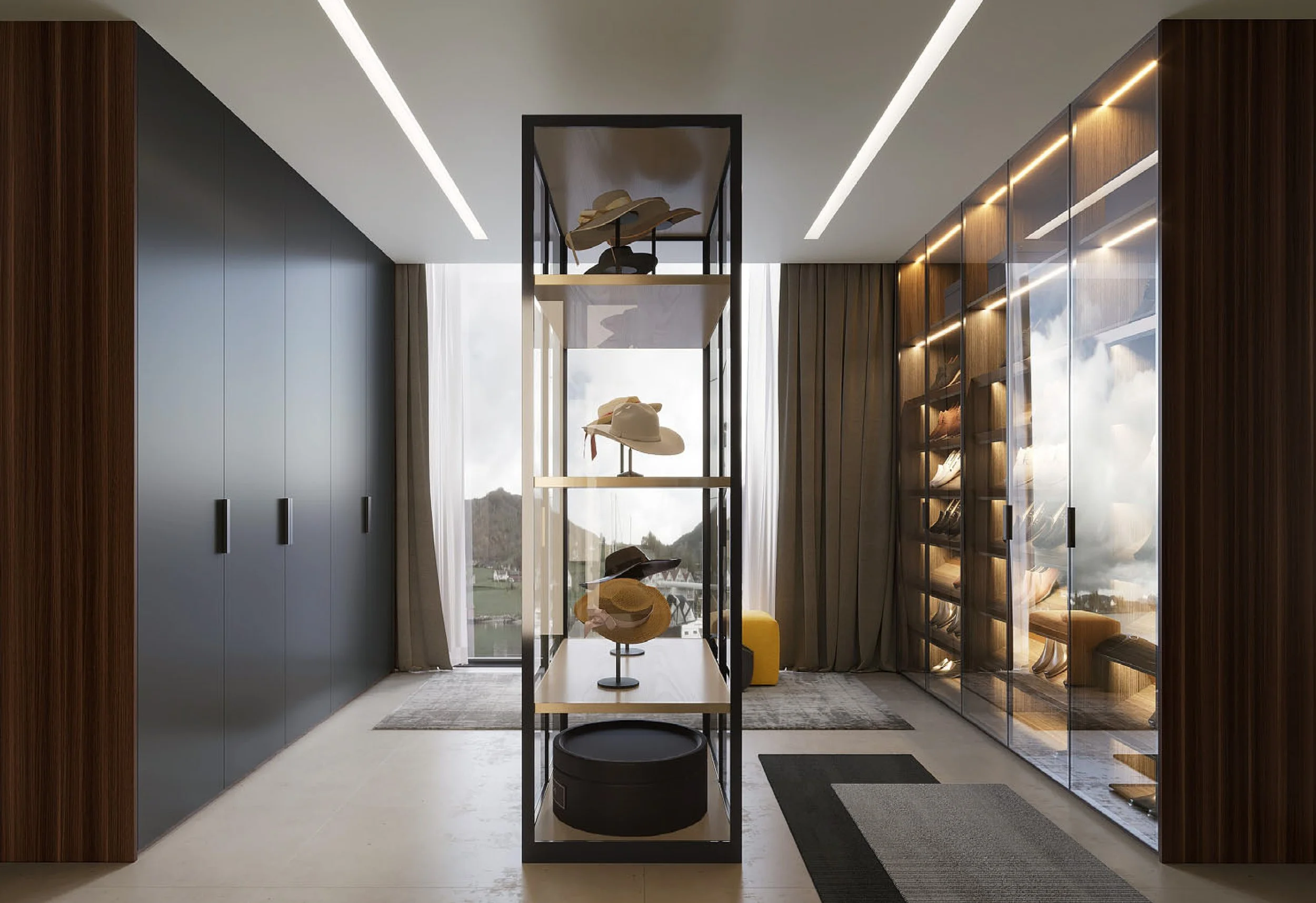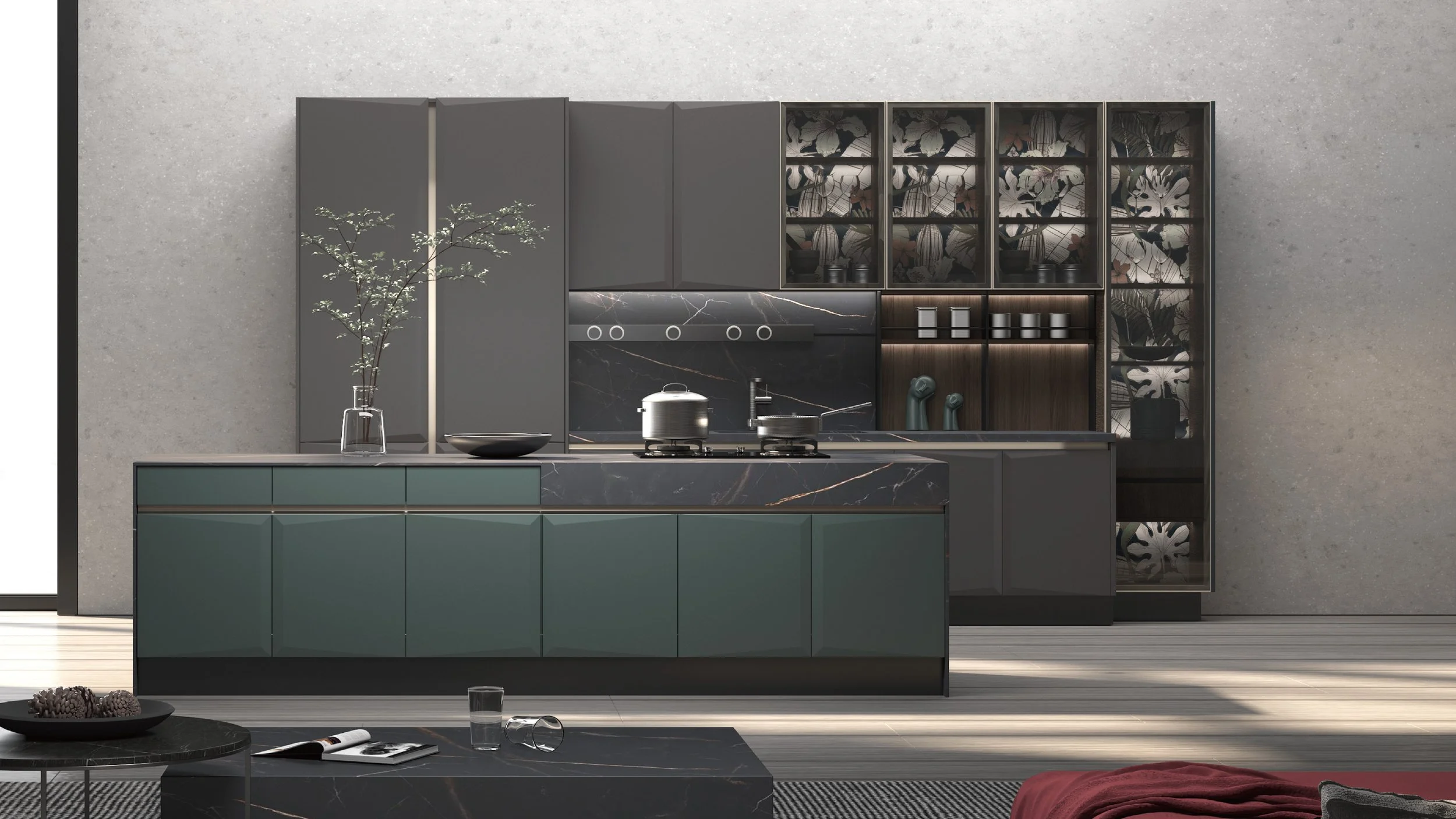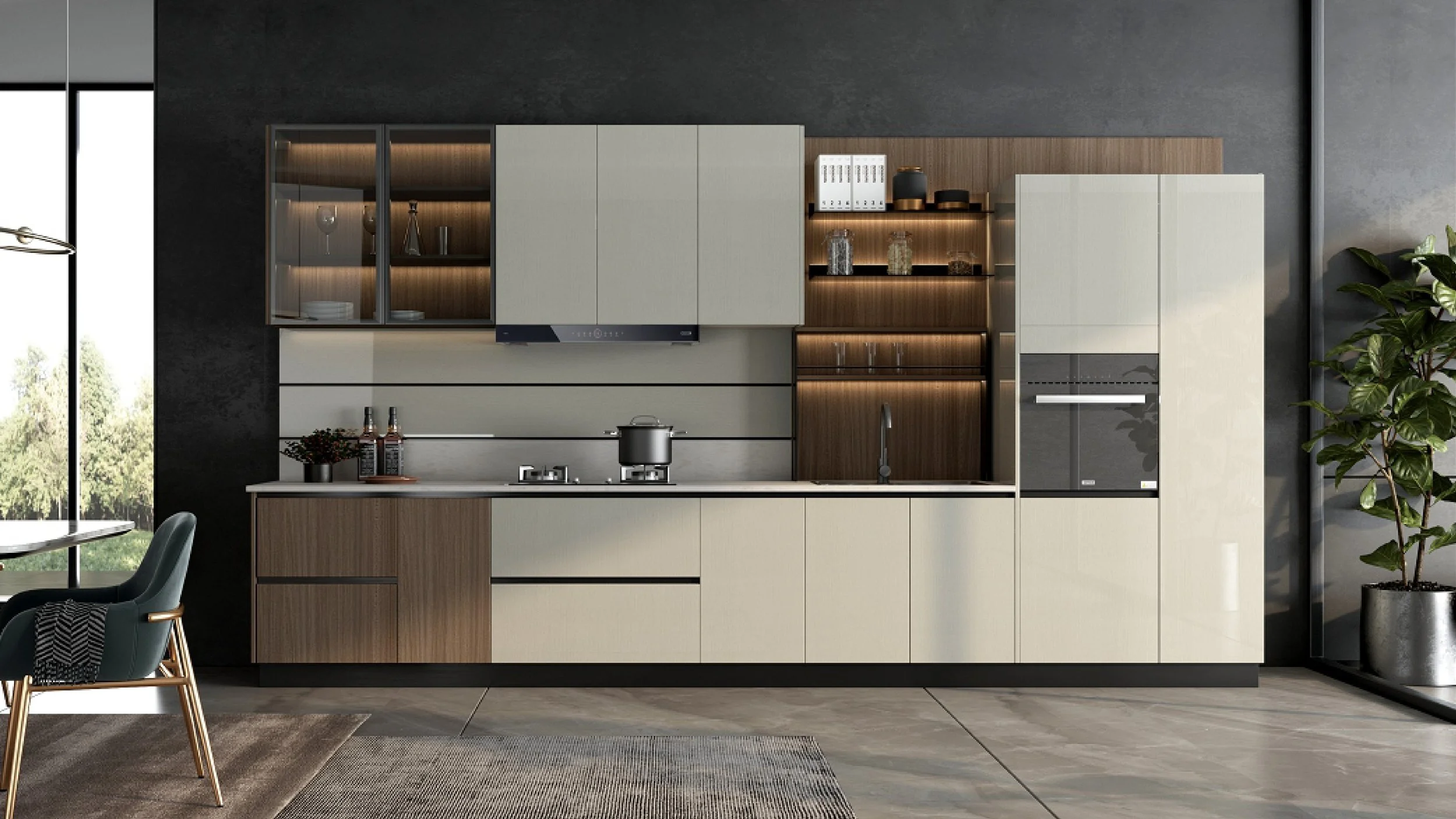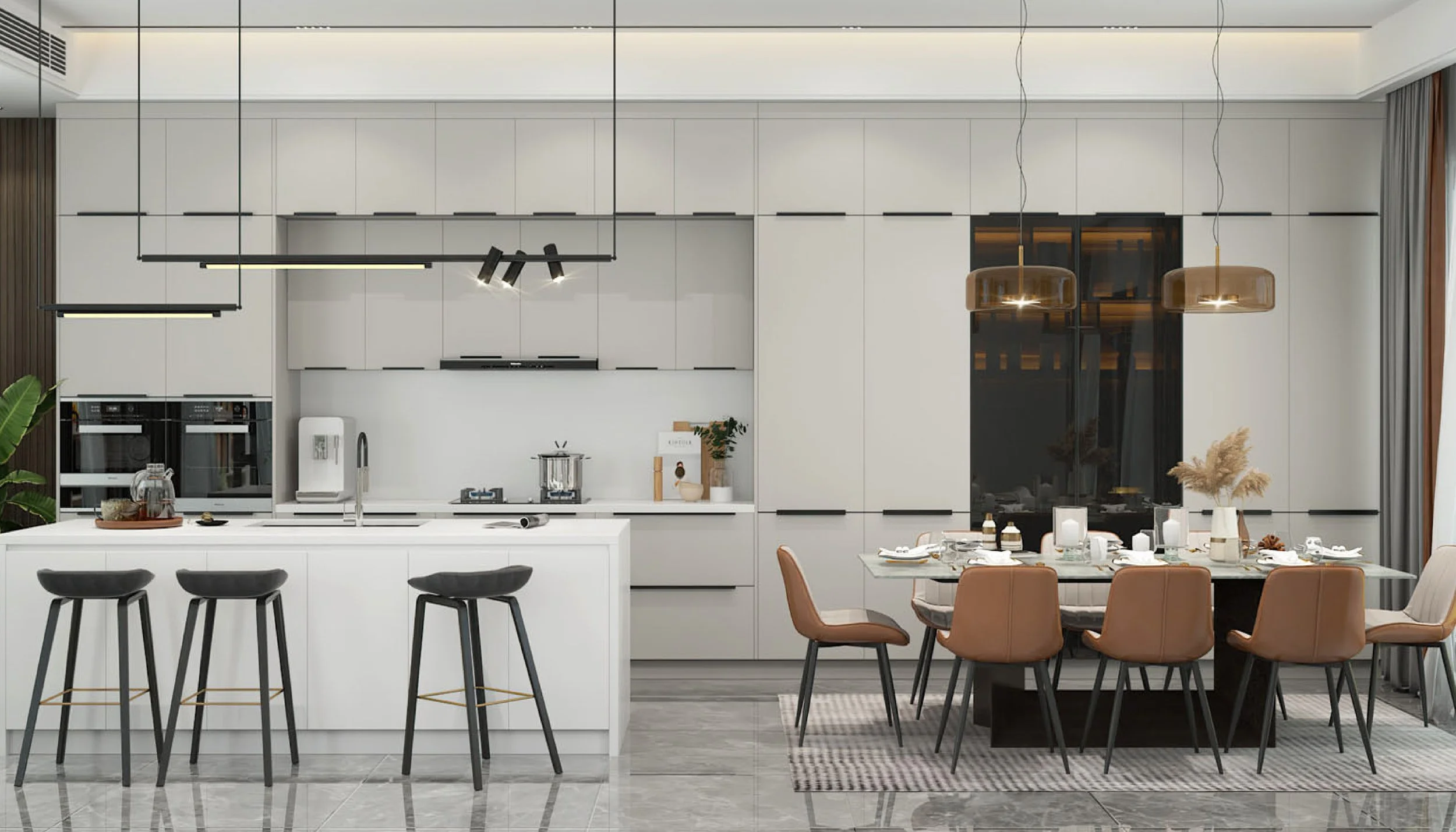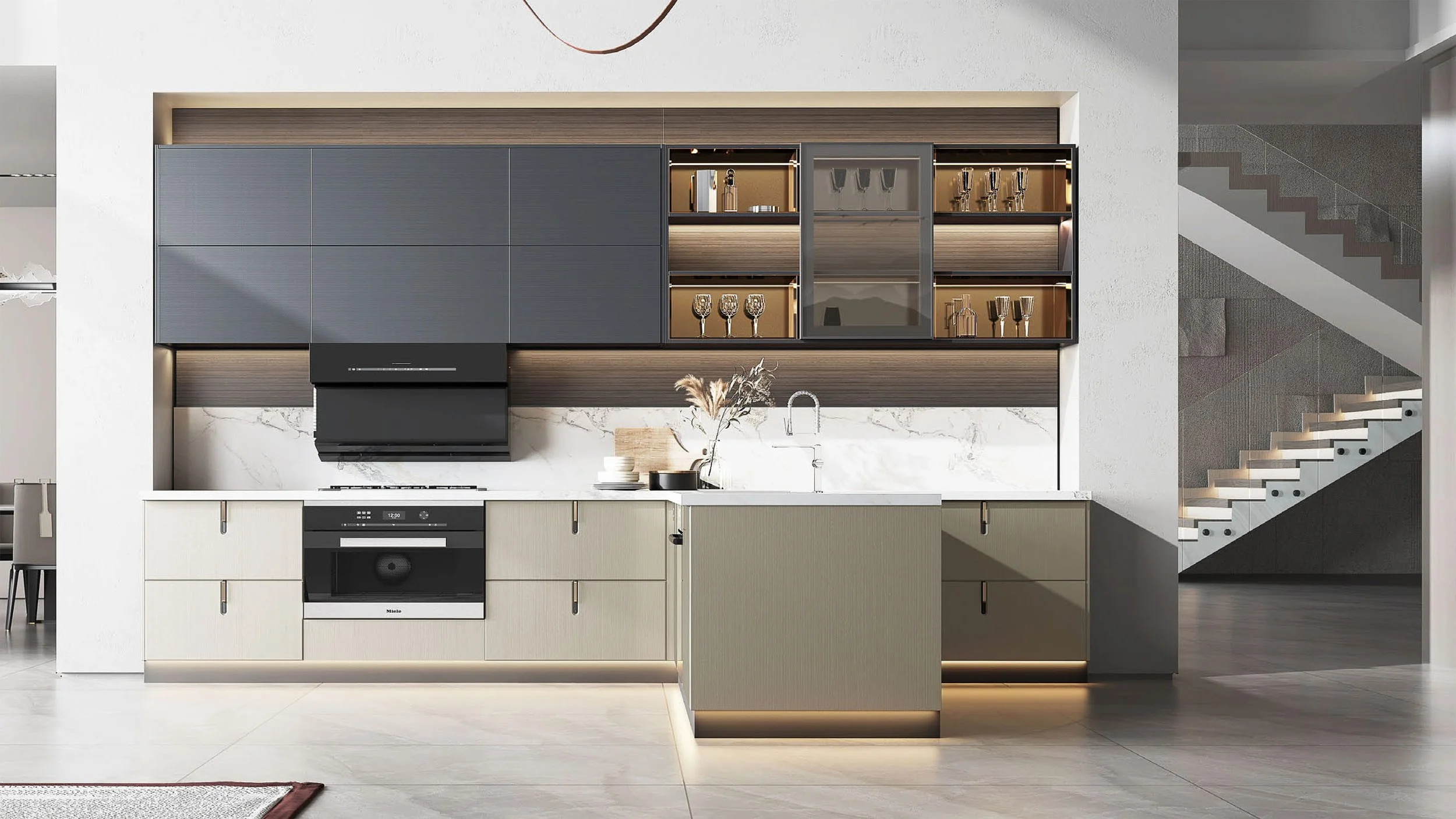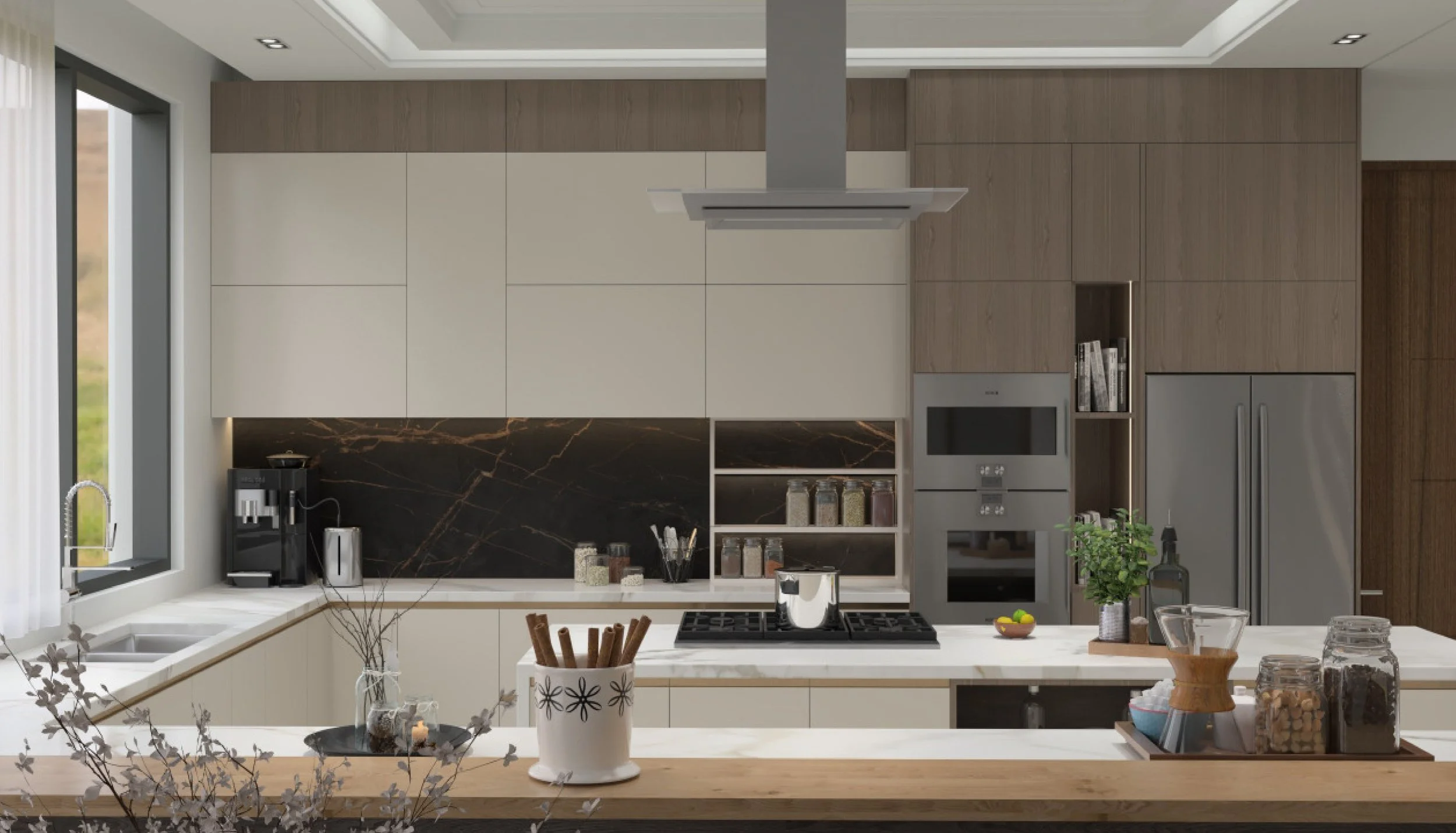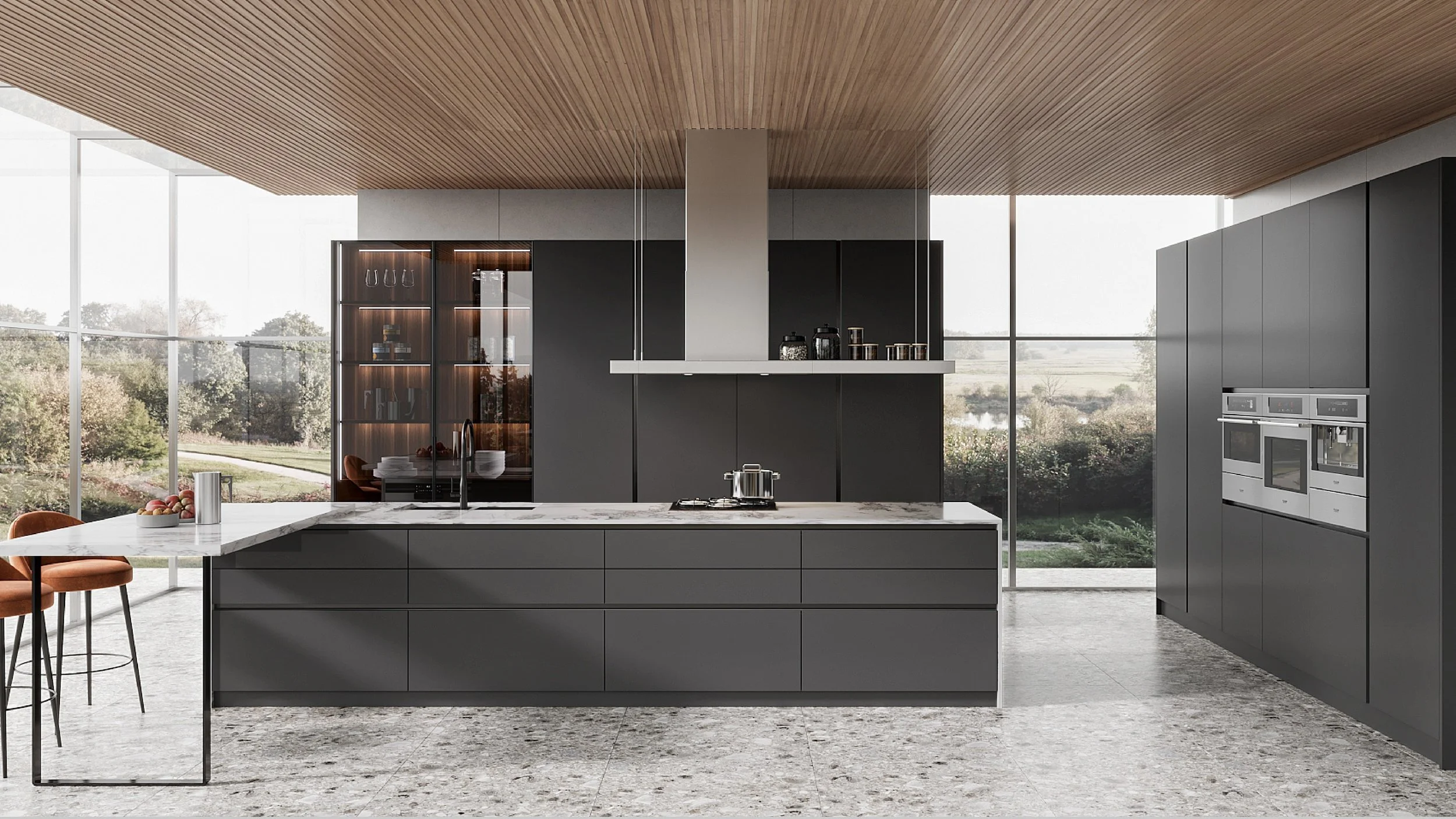Kitchen Benchtop Materials in Australia: Your Post-Engineered-Stone Guide
Choosing a benchtop is one of the biggest design and performance decisions in any kitchen. Since 1 July 2024, Australia has banned the manufacture, supply, processing and installation of engineered stone benchtops, panels and slabs, so it’s more important than ever to understand the best alternatives for look, durability and budget. Eco Squared designs, supplies and installs European-style cabinetry across the Sutherland Shire, and we’ll help you pair cabinetry with the right benchtop for daily life.
Note on compliance: The national prohibition on engineered stone is now in force. It does not apply to porcelain and sintered stone products. Safe Work Australia
The standout alternatives (what to consider and why)
1. Porcelain / Sintered Stone
Why people choose it: Exceptional heat, stain and UV resistance; thin profiles look sleek; huge range of stone, concrete and metal looks.
Considerations: Needs a skilled fabricator; edges and cut-outs must be planned early; price typically mid–high.
Great for: Busy family kitchens, outdoor servery windows, low-maintenance homes.
2. Natural Stone (Granite, Dolomite, Quartzite, Marble*)
Why people choose it: Unique veining; can look luxurious and timeless; high heat tolerance (varies by stone).
Considerations: Porosity and etching risk (especially *marble); sealing and care required; variability between slabs, so always choose in person.
Great for: Statement islands, classic and luxury schemes.
3. Solid Surface (e.g., Acrylic/Polymer)
Why people choose it: Seamless joins and integrated sinks; warm to the touch; repairable if scratched.
Considerations: Softer than stone/porcelain; avoid direct heat; pricing mid.
Great for: Hygienic, seamless looks; curved or sculpted edges.
4. Laminate
Why people choose it: Budget-friendly; massive colour/pattern choice; modern laminates look convincing at a fraction of the cost.
Considerations: Vulnerable to heat and deep cuts; visible joins; substrate must be well protected at sinks.
Great for: Investment properties, rentals, refreshes and secondary benches.
5. Timber (Solid Wood or Bamboo)
Why people choose it: Warm, natural feel; softens minimalist kitchens; can be refinished.
Considerations: Needs oiling or sealing; sensitive to standing water and heat; expect patina over time.
Great for: Breakfast bars, islands away from the sink/cooktop, Scandinavian or coastal schemes.
6. Stainless Steel
Why people choose it: Professional look; heat and hygiene champion; welded sinks for seamless prep areas.
Considerations: Shows scratches (becomes a uniform patina); can sound “live” without backing; higher cost with bespoke fabrication.
Great for: Serious cooks, cafe-style islands, butler’s pantries.
How to choose: three filters that make the decision easier
Lifestyle & maintenance
If you want “wipe and forget”, lean porcelain/sintered or harder natural stones. Comfortable with upkeep? Marble is beautiful but needs care.
Budget & value
For premium looks without premium spend, mix materials: laminate on runs + porcelain/sintered on the island. It’s common and looks intentional.
Aesthetics & light
Light, low-sheen surfaces brighten small kitchens. Bold veining suits large islands with generous slabs and good natural light.
Benchtop thickness, edges & details
12–20 mm porcelain/sintered gives a slim, modern profile; 40 mm mitred edges create presence on feature islands.
Pencil or small-radius edges tame chips on family kitchens.
Waterfall ends protect corners and visually anchor an island.
Plan power points (flush or pop-up) early; confirm overhang supports for stool seating.
Splashbacks that play nicely
Porcelain/sintered splashbacks are grout-free and resilient.
Glass adds light and reflection in compact rooms.
If you love tile, choose larger formats or tight grout lines to avoid visual clutter.
Good / Better / Best pathways
Good: Laminate on runs, durable profile edge, tile splashback, stainless insert at cooktop.
Better: Porcelain/sintered on main run, laminate utility zone, glass splashback, integrated bins near prep.
Best: Full porcelain/sintered scheme with waterfall island, matching splashback, integrated power and scene-controlled lighting.
Local design, tidy installation
Eco Squared coordinates benchtop templating, fabrication and installation with your cabinetry schedule to avoid delays. We manage design, supply and install across the Sutherland Shire (and ~20 km surrounds) with clear documentation and after-care.
Transform Your Space with Eco Squared
Embrace the elegance and functionality of European design with Eco Squared. Our Oppolia partnership provides access to premium materials and cutting-edge manufacturing, tailored for the way Sydney lives.
Get a Free SMART QUOTE
Film a quick 360° video and Text/WhatsApp 0466 119 712 (no home visit required).
Prefer email? info@eco2.com.au
FAQs
What is the best kitchen benchtop material in Australia now that engineered stone is banned?
Most homes choose porcelain or sintered stone for heat, stain and UV resistance with minimal upkeep. They offer stone-like looks without the silica risks that led to the engineered-stone ban.
Is porcelain the same as engineered stone?
No. Porcelain/sintered stone is a kiln-fired ceramic surface and not covered by the ban. Engineered stone (quartz + resin) is banned from 1 July 2024 in Australia.
Can I still install engineered stone if my contract is old?
Some states allowed limited transition periods for pre-existing contracts; always check your regulator. For new projects, choose compliant alternatives like porcelain/sintered or natural stone.
Which benchtop is most heat-resistant?
Porcelain/sintered and many natural stones handle heat well. Always use trivets to protect seals and finishes.
What’s the most budget-friendly benchtop?
Laminate is the most cost-effective and has improved dramatically in look and feel. Pair it with a feature island in a premium surface if you want a hero piece.

